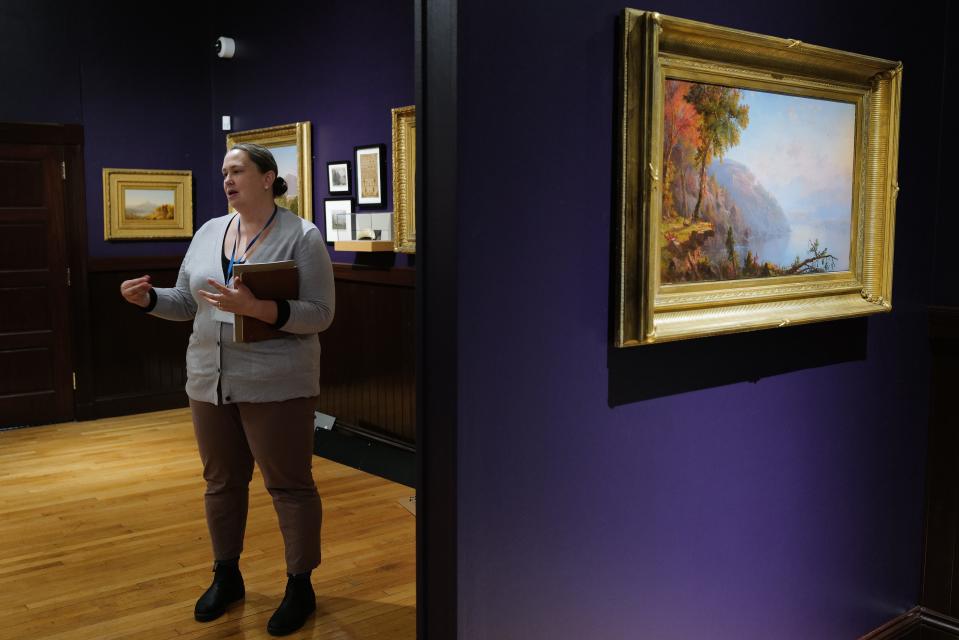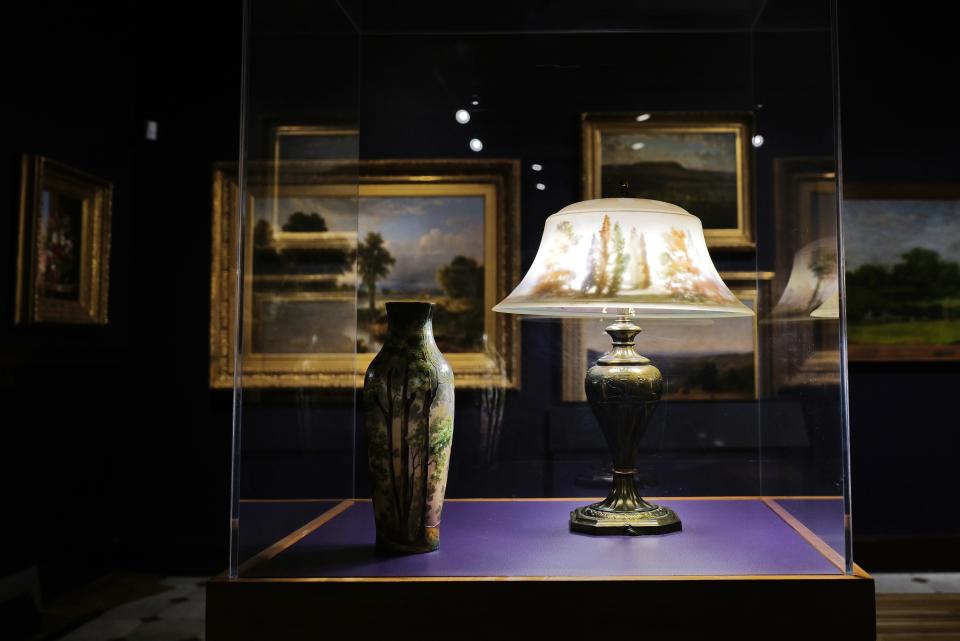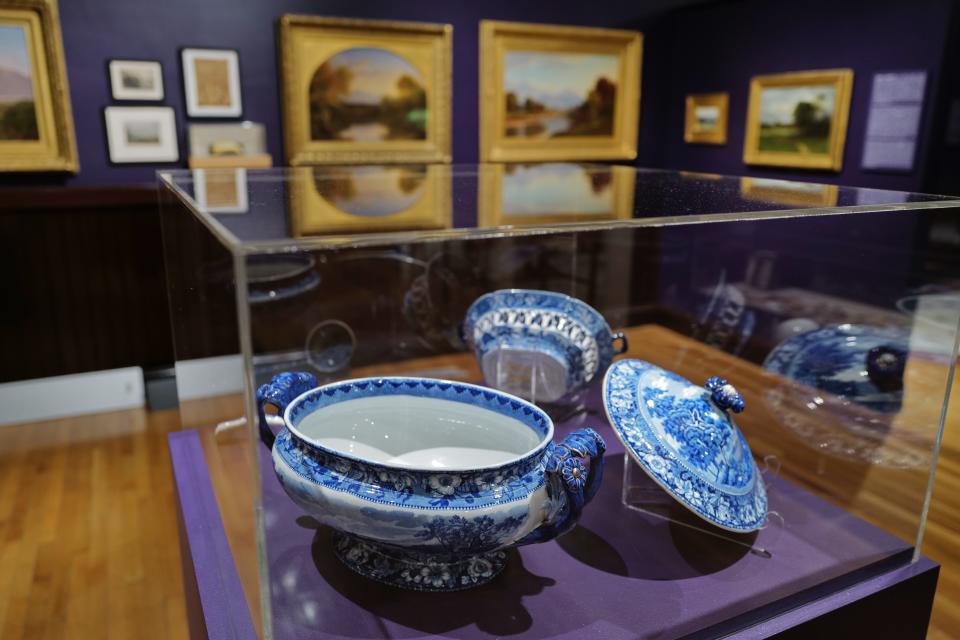Paintings emerge from behind closed doors to tell the hidden story at Whaling Museum
NEW BEDFORD — It’s what was left out of the conversations about the landscapes on display in the new exhibition at the New Bedford Whaling Museum that make a difference.
Artist Edward Mitchell Bannister was central to the Providence art scene at the end of the 19th century, and was one of just a few free-born Black landscape painters to achieve public success in the United States prior to the Civil War.
His is the only work in the exhibition by an artist of color. He was unique in that he depicted landscape when a lot of other artists during the post-Reconstruction period, especially artists of color, felt compelled to picture African American scenes. At the same time, he was an active abolitionist.

For Bannister, it was the institutional circumstances, the structure, the systemic racism that existed that prevented him in some ways from potentially achieving greater recognition, according to Naomi Slipp, the Douglas and Cynthia Crocker Endowed Chair for the Chief Curator at the Whaling Museum.
“I think absence in the exhibition hopefully speaks in some ways as much as the works that we have on the wall,” she said.
'Representation matters so much': Local group for Latina business owners is launched

The New Bedford Whaling Museum will debut “Re/Framing the View: Nineteenth-Century American Landscapes” on Friday, Oct. 28, in the Wattles Gallery.
The new exhibition reveals landscape artwork typically hung behind closed doors from six regional private collections, six institutional lenders and the Whaling Museum’s collection, and features more than 100 items.
In curating the exhibition, Slipp took careful consideration of the roles women played in picturing nature as well as the way in which environmental degradation, federal Native American removal policies and racialization were either pictured or erased in the American landscape scenes.
“We’re really trying to showcase the breadth and beauty of the 19th century American landscape, but also have everyone think a bit critically about what those landscapes might have meant or what content you may not actually see in the pictures themselves,” she said.

She said they are using three lenses to engage some of those questions, and all of them relate to contemporary conversations that are happening today.
“Re/Framing the View” explores gender, including why there were few female landscape painters unless they were a daughter or wife of an artist, and why women often pictured nature through still life, needlepoint, watercolor and decorative arts.
Slipp said the majority of American landscape painters were men, and that’s likely because they had the freedom to head out into the wilderness while most women had to stay home to manage the household and raise the children.
'I'm in the right place': How New Bedford's TDI fellow will help accelerate development
The exhibition also explores the environment in relation to historical landscapes and ecological restoration, and racial identity and how artists of color practiced their art and the limitations that they faced as well as the Native presence and absence. All the landscapes depict ancestral homelands for indigenous communities and are identified by those communities.
“People can hopefully walk away with some insight that might help how they think about their lives in this moment,” she said.
Curious SouthCoast: Is it Fort Taber or Fort Rodman? Why this New Bedford fort has 2 names

Slipp said while getting people thinking about the history, social context and the culture of landscape painting and what it meant to certain people, the exhibition is also about exhibiting gorgeous works of art by artists from near and far that people will enjoy seeing and learning about.
The 19th century American artists are well known for their depictions of nature and the outdoors, for their commitment to creating a national “school” of painting, and for their documentation and idealization of scenery ranging from the imagined and pastoral to the dramatic and sublime.
A 206-page hardcover exhibition catalog “Re/Framing the View” is also available at the Whaling Museum, featuring essays and contributions and 123 full-color plates of the artwork in the exhibition.
The publication and exhibition have been made possible by funding from the William M. Wood Foundation, Cynthia and Douglas Crocker, Victoria and David Croll, KAM Appliances, Louis M. Ricciardi and Elizabeth M. Soares, Mary Jean and William Blasdale, an anonymous donor, and other individual supporters.
The exhibition will run through May 14, 2023.
Standard-Times staff writer Kathryn Gallerani can be reached at kgallerani@gannett.com. Follow her on Twitter: @kgallreporter. Support local journalism by purchasing a digital or print subscription to The Standard-Times today.
This article originally appeared on Standard-Times: Whaling Museum exhibit celebrates depictions of nature and the outdoors

